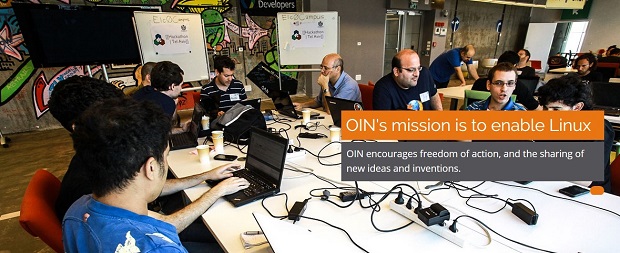According to estimates, more than 90% of software being developed, and currently in use, contains open source-based software libraries, objects and modules. Cloud platforms, search engines and databases, enterprise computing networks, mobile devices and so many other computing environments that the list is too long to detail – are all powered by platforms or code that contains or is completely composed of open source code.
There are operating companies that have looked to leverage patents of various qualities to make building and using open source-based products an expensive and risky bet. That was certainly very much the case in 2005. That year, Open Invention Network was formed in partnership by IBM, Philips, Sony, Red Hat, NEC and Novell to make it difficult for companies looking to slow the development and adoption of Linux and other burgeoning open source projects. Over the years Google and Toyota joined as board members and financial supporters.
Today, the OIN community has grown in size to include more than 3,300 businesses and organizations. It is the largest patent non-aggression community in history. OIN has been a bulwark against patent aggressors, and its efforts have enabled the rapid growth and adoption of open source software.

At the heart of the OIN Community is its cross-license. Every community member, including the OIN Board Member companies, sign the same royalty-free license. The only requirement in the license is that all community members agree not to exert any patents they may own based on a list of core technology software “packages” that are addressed in what OIN calls its Linux System Definition.
Updated about every two years, the Linux System Definition is a list of software components from a broad range of organizations and groups representing a large share of the body of existing, de-facto standard open source projects. Over the past 15 years, OIN has updated the “LSD” eight times, with the most recent taking place this past October.
The latest update added 520 new software components, bringing the total to approximately 4,000. While the list is very Linux-focused, based on our examination it is clear that the OIN community is committed to protecting the greater open source ecosystem. Within the OIN LSD are many gems for those businesses and organizations that are interested in more than Linux kernel functionality protection. Following are four that we found very interesting.
Automotive
The development of “smart cars” continues to move in lockstep with the electrification of automotive motor platforms. For several years The Linux Foundation has been working with automotive companies to develop Automotive Grade Linux. While the project is initially focused on making a Linux-based platform the foundation for the entertainment system, it is clear that this is just a first step. Automotive Grade Linux may someday become the dial tone for the majority of automotive platforms, allowing vendors of higher-order devices and services to “plug and play” their functionality into OEM customers’ platforms. Open Invention Network’s Linux System Definition lists a number of the “AGL” software components within the Linux System Definition.
Embedded / IoT / IIoT
The transportation, manufacturing, industrial and motion control technology vendors are rapidly developing Industrial Internet-of-Things (IIoT) platforms. According to a recent MarketsandMarkets report, The IIoT market is expected to grow from $77.3 billion USD in 2020 to $110.6 billion USD by 2025. IoT/IIoT systems are distributed networks of computers and intelligent sensors powered by embedded computing technology. Embedded Linux has more than a 50% share of the embedded device market. The Open Invention Network’s LSD includes Yocto and related projects like opkg and bitbake.
Robot Operating System – ROS
The name is a bit misleading – ROS is actually robotic middleware, a collection of software frameworks and a set of tools that can be used to develop or build robotic systems.
It is open source, and almost always used on top of a Linux-based platform. ROS is quickly becoming the go-to robotics software, used in devices across multiple robotics applications and industry segments. The Linux System Definition includes key ROS software components.
Networking & Security
OpenSSH is a suite of secure networking utilities based on the Secure Shell protocol, which provides a secure channel over an unsecured network in a client–server architecture for Linux and other popular operating systems. OpenSSL is a full-featured toolkit for the Transport Layer Security (TLS) and Secure Sockets Layer (SSL) protocols. It encrypts data and authenticates a connection when moving data on the Internet. OpenVPN is a virtual private network system that implements techniques to create secure point-to-point or site-to-site connections in routed or bridged configurations and remote access facilities. The Linux System Definition contains the key software components for OpenVPN, OpenSSL and OpenSSH.
The majority of businesses and organizations likely join OIN to protect core Linux implementations as well as specific aspects of their computing environments. Interestingly, there are very important, some would say critically strategic, software components that receive the OIN Community’s intellectual property protection that is enabling the future of many different industries.

